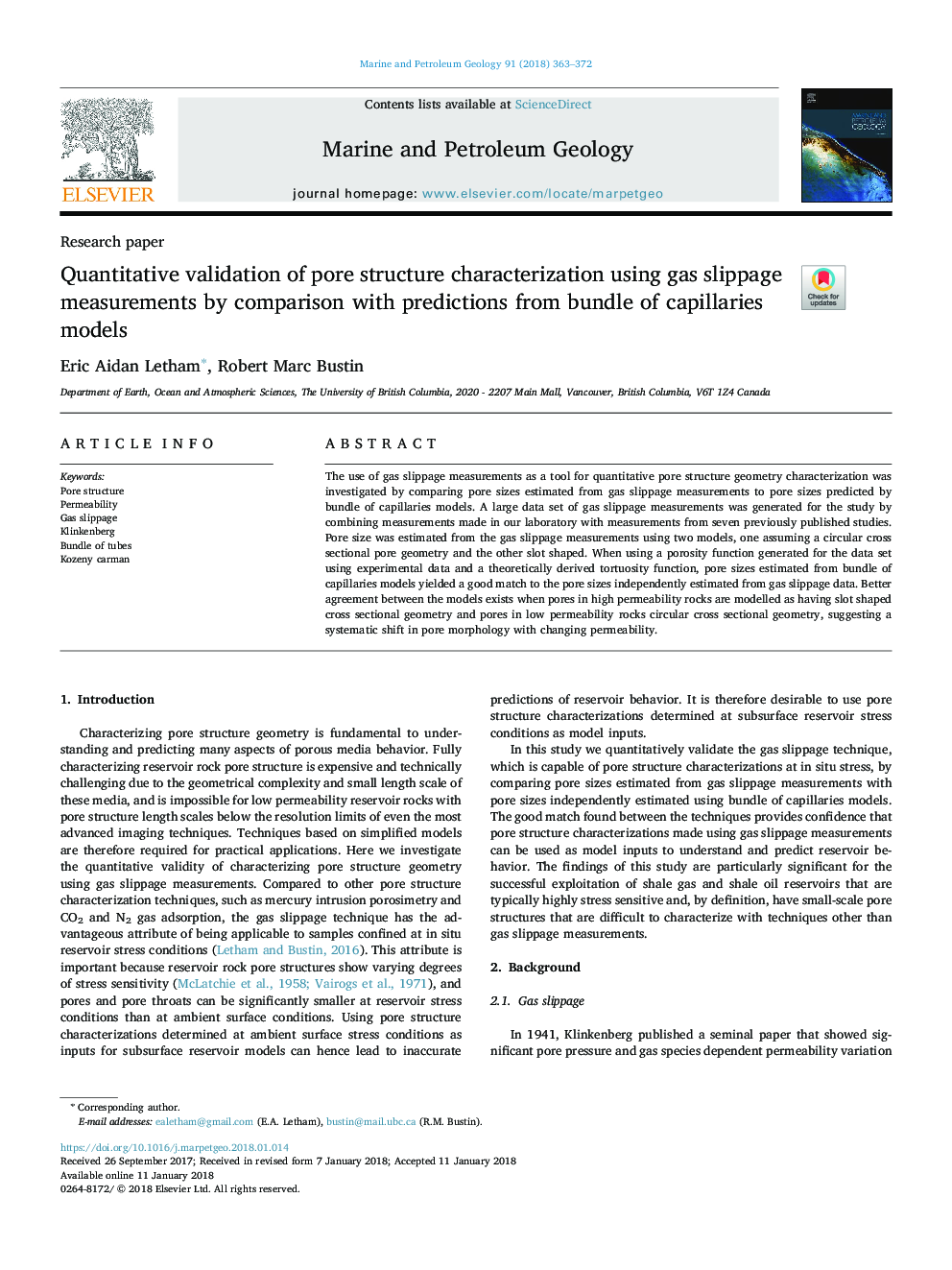| Article ID | Journal | Published Year | Pages | File Type |
|---|---|---|---|---|
| 8909192 | Marine and Petroleum Geology | 2018 | 10 Pages |
Abstract
The use of gas slippage measurements as a tool for quantitative pore structure geometry characterization was investigated by comparing pore sizes estimated from gas slippage measurements to pore sizes predicted by bundle of capillaries models. A large data set of gas slippage measurements was generated for the study by combining measurements made in our laboratory with measurements from seven previously published studies. Pore size was estimated from the gas slippage measurements using two models, one assuming a circular cross sectional pore geometry and the other slot shaped. When using a porosity function generated for the data set using experimental data and a theoretically derived tortuosity function, pore sizes estimated from bundle of capillaries models yielded a good match to the pore sizes independently estimated from gas slippage data. Better agreement between the models exists when pores in high permeability rocks are modelled as having slot shaped cross sectional geometry and pores in low permeability rocks circular cross sectional geometry, suggesting a systematic shift in pore morphology with changing permeability.
Related Topics
Physical Sciences and Engineering
Earth and Planetary Sciences
Economic Geology
Authors
Eric Aidan Letham, Robert Marc Bustin,
